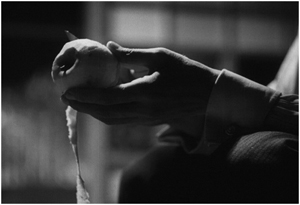July 16th Log
BABY FACE
1933, Alfred E. Green, United States
Repeat Viewing, Turner Classic Movies
Turner Classic Movies celebrated the birthday of Barbara Stanwyck tonight, so I had to check out this endlessly watchable film that really made her a star: 1933's Baby Face. In 1934 Hollywood established a "Production Code" which added new censorship laws to films. However in the early1930's, just before the code was enforced, films openly contained startling content. Alfred E. Green's 1933 Baby Face is a prime example of the pre-code era. Packed with naughty, unapologetic issues of sexual implications, BabyFace stands as a major influence to the creation of the code.Even after heavy cuts by the studios (the film is only 71 minutes), it remains one of the most shocking films of the decade. The stunningly gorgeous Barbara Stanwyck gives a fascinating performance as the leading lady who uses men toclimb the corporate ladder. Stanwyck's range, energy, charm, and beauty will have you forgetting (like the film itself) the moral issues involved. The film does get a bit serious towards the end, but ultimately, Baby Face is just a joyous film to experience. No message, and certainly no rules.... just alot of fun!
MOTHER
1952, Mikio Naruse, Japan
Repeat Vieiwng, DVD
Mother was a film that Mikio Naruse considered his“happiest film” and it remains a beloved Japanese classic. The film is a touching one of bittersweet melodrama, but in trademark Naruse fashion, it is made with a minimalist touch and without sentiment. The screenplay was written by Yoko Mizuki, who based the story off of an essay written by a teenager about her mother. As such the film takes on the view of the teenager (played with delicate sweetnessby Kyoko Kagawa) in what is her tribute to her mother, a widow of three children that she struggles to support. Poverty forces the mother to make a sacrifice in order for her family to live a future life of happiness. Motheris a film that is constantly alternating between sadness and happiness. While the family is left with illness and poverty the film reveals hope through moments of joy (such as the town festivals or the visit day at the park and on the rides). Through it all the mother perceives and this is captured with subtle perfection by the great Kinuyo Tanaka. As seen through the eyes of her daughter, the film observes afeeling of understanding and knowing that there will always be a divide and a desire to connect the child and the parent. Mother is presented with a sense ofthe everyday life of this lower class family (emotionally, physically, and spiritually). We see the struggles to maintain life, but we also see the joys it has to offer. This is best expressed in Naruse’s masterfully poetic and touching final moments. Heightened by a lyrical voice-over and remarkable performances from Tanaka and Kagawa, Mother ends with a feeling of beautiful optimism and compassionate humanity.
>> Here is a scene from Mother (Okasan):



0 Comments:
Post a Comment
Subscribe to Post Comments [Atom]
<< Home